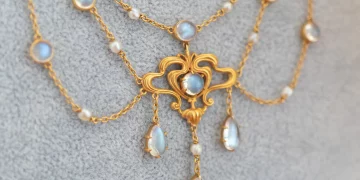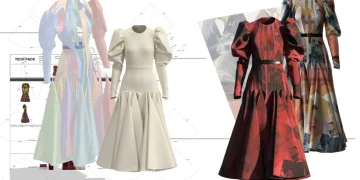The jewelry industry has long been a symbol of luxury, prestige, and investment. Over the years, it has undergone significant transformations, influenced by global economic conditions, consumer preferences, and emerging market trends. One of the most intriguing aspects of the jewelry market is the relationship between demand growth and price fluctuations. While the connection between the two may seem straightforward—higher demand leading to higher prices—the reality is far more complex, influenced by a myriad of economic, sociocultural, and market dynamics.
This article will delve into the subtle and intricate relationship between demand growth and price volatility in the jewelry industry, examining how external factors, consumer behavior, global trends, and supply chain challenges contribute to this delicate balance.
1. Demand Growth: A Driving Force in the Jewelry Market
Demand for jewelry is largely driven by economic growth, rising disposable incomes, increasing consumer wealth, and an insatiable desire for status symbols. The demand for luxury jewelry—especially high-end pieces made with precious metals like gold, platinum, and rare gemstones like diamonds—remains robust in periods of prosperity. However, the relationship between demand and price is far from linear, influenced by factors beyond just the basic economic conditions.
1.1 Rising Disposable Incomes and Changing Consumer Preferences
In many emerging markets, increased wealth has led to an upsurge in demand for luxury jewelry. For instance, the growing middle class in countries like China, India, and Brazil has significantly expanded the consumer base for high-end jewelry. As disposable incomes rise, more individuals are able to afford expensive jewelry, increasing the overall demand for pieces that convey status, prestige, and cultural symbolism.
At the same time, consumer preferences have evolved. Today’s luxury buyers are not only looking for traditional items like diamond rings or gold necklaces, but also for custom-made, ethical, and innovative jewelry that reflects their personal values. This growing demand for unique, bespoke designs has introduced a level of diversification into the market, further stimulating overall demand in specific sectors of the jewelry industry.
1.2 The Influence of Wealthy Consumers in Developed Markets
In developed economies, wealthy consumers (particularly in regions like North America, Europe, and the Middle East) continue to be a driving force in demand for luxury jewelry. Despite economic fluctuations, the ultra-wealthy often view luxury jewelry as a timeless asset—an item that preserves its value and holds significant emotional appeal. Thus, demand for high-end luxury pieces often remains unaffected or even strengthened during times of economic uncertainty.
For example, billionaires and HNWIs (high-net-worth individuals) are more likely to invest in rare gemstones, limited-edition watches, and bespoke designs, which often appreciate in value over time. The demand for fine jewelry in these high-net-worth brackets has led to the creation of a niche market, where price fluctuations may not necessarily follow typical patterns.
2. The Price Fluctuations: Influencing Factors in the Jewelry Market
Jewelry prices are subject to a variety of factors beyond mere supply and demand. While demand growth can push prices upward, there are several other elements that play a crucial role in the price fluctuations in the jewelry sector.
2.1 Raw Material Costs and Global Supply Chains
The price of precious metals (gold, platinum, silver) and gemstones is one of the most direct factors that affect the pricing of jewelry. For example, the price of gold and diamonds can fluctuate dramatically based on mining conditions, geopolitical events, currency value shifts, and global supply chain disruptions.
- Gold, for instance, is a safe haven asset during periods of economic uncertainty. As inflation and economic crises make other investments more volatile, gold often sees a price increase as investors seek stability. A rise in gold prices inevitably leads to higher costs for gold jewelry, which can, in turn, drive up retail prices.
- Diamonds, on the other hand, are subject to market demand (with trends fluctuating between mined and lab-grown diamonds) as well as geopolitical conditions. For instance, diamond mining in countries like Africa or Russia can be affected by political unrest, and natural disasters or labor strikes can disrupt the supply of diamonds, leading to price increases.
2.2 Geopolitical and Economic Instability
The global political environment often plays a significant role in driving price fluctuations in the jewelry market. For example, political instability or trade conflicts between major countries can affect the supply chain for precious metals and gemstones, leading to price volatility. The Russian invasion of Ukraine, for instance, has had a significant impact on diamond supply, as Russia is one of the largest diamond producers in the world. The imposition of sanctions and trade restrictions on Russian diamonds led to disruptions in the global market, influencing diamond prices worldwide.
Moreover, the global economic landscape—marked by recessions, inflation, or interest rate hikes—can impact the purchasing power of consumers, affecting demand for luxury items like jewelry. During economic downturns, high-end purchases may decrease as consumers tighten their wallets, causing a dip in jewelry demand. Conversely, in times of economic recovery or booming wealth creation, demand can surge, pushing prices higher.
2.3 The Role of Luxury Brands and Consumer Perception
The strategies employed by luxury jewelry brands also have a significant impact on pricing. High-end brands often capitalize on their exclusive status by creating limited edition pieces, which are marketed as rare or one-of-a-kind. This marketing strategy can make jewelry appear more valuable, even if it’s made from relatively common materials.
In addition, the perception of exclusivity is a major price driver in the luxury jewelry market. For example, a Tiffany & Co. diamond necklace or a Cartier bracelet is often priced higher due to the brand name itself, rather than the intrinsic value of the materials. Luxury brands can raise prices through prestige pricing strategies, knowing that the demand for their products remains strong due to the emotional appeal and perceived value of owning a prestigious piece.

3. The Subtle Relationship: How Demand and Price Interact
Understanding the relationship between demand growth and price fluctuations in the jewelry market requires an appreciation of the delicate balance between various factors. While demand growth can push prices higher, it is not a straightforward one-to-one correlation. Instead, several complex dynamics come into play.
3.1 Elasticity of Demand in Luxury Goods
The elasticity of demand—or the degree to which demand responds to changes in price—varies significantly in the jewelry market. In the case of luxury jewelry, demand is often inelastic, meaning that a slight increase in price may not result in a significant decrease in demand. This is particularly true in premium luxury segments, where consumers are more willing to absorb price hikes due to their financial capability and the status associated with owning the jewelry.
For example, high-net-worth individuals (HNWIs) are often less sensitive to price changes, as their demand for luxury pieces is driven by personal prestige, emotional value, and investment purposes rather than the product’s intrinsic cost. As such, luxury jewelry brands may increase prices in response to rising material costs or growing demand, confident that their target consumers will continue to make purchases.
3.2 The Influence of Supply Chain Constraints
Supply chain disruptions often play a key role in creating price fluctuations in the jewelry industry. When supply constraints (whether caused by mining shortages, labor disputes, or geopolitical factors) are coupled with growing demand, the result can be a sudden spike in jewelry prices. Conversely, overproduction or material surpluses can lead to lower prices as brands attempt to reduce inventory and maintain market balance.
3.3 Consumer Behavior: The Role of Fads and Trends
Jewelry trends also contribute to price fluctuations. In times of fashion booms, such as the resurgence of vintage or art-deco styles, demand for specific pieces can cause prices to rise due to the limited availability of certain styles or materials. On the other hand, if consumer interest wanes, the demand for specific pieces may drop, leading to a reduction in price.
Conclusion: A Delicate Balance
The relationship between demand growth and price fluctuations in the jewelry industry is multifaceted and influenced by numerous variables. While increasing demand can certainly drive prices higher, the interplay between raw material costs, supply chain disruptions, economic cycles, geopolitical instability, and consumer preferences creates a delicate balance that doesn’t always follow a predictable path. The jewelry industry’s ability to navigate these complex dynamics—while maintaining its allure, exclusivity, and investment value—will continue to shape its future in the coming years.
For consumers, collectors, and investors alike, understanding these subtle relationships is essential when considering jewelry purchases as both luxury items and investment opportunities.

















































